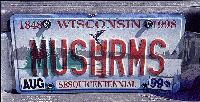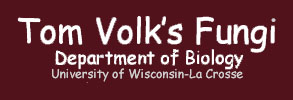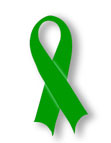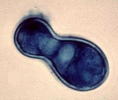| The fine print: Keywords for
search engines: Click here to learn
more.
Agaricus augustus, the Prince-- and quite an august mushroom
Agaricus bisporus, the white button mushroom, pizza
mushroom, portabella, or crimini. Agrocybe
praecox, a common spring inhabitant of wood chips.
Aleurodiscus oakesii, the oak parchment, cause of "smooth
patch disease" The death angel, Amanita bisporigera, Amanita
virosa, and Amanita verna. Amanita marmorata
subspecies myrtacearum, a Hawaiian mushroom in honor of
Dr. Orson K. Miller, Jr., in honor of the 2007 North American
Mycological Association Orson K. Miller Jr. NAMA foray in
Pipestem, West Virginia, August 16-19 Amanita
muscaria, the fly agaric -- a hallucinogenic and poisonous
mushroom. Armillaria gallica, the
Humongous Fungus. Armillaria nabsnona,
honey mushroom number nine. Or you can jump right to
nabsnona.html this page , which is an online version of the
original paper by Volk, Burdsall, and Banik describing this
species. Armillaria solidipes, an older name for
Armillaria ostoyae, North American Biological Species I,
NABS I, with co-author Hal Burdsall. Aspergillus,
a deuteromycete useful in industrial mycology-- and also a human
pathogen. Aspergillus fumigatus, cause of
Aspergillosis. Asterophora lycoperdoides, the star
bearing powder cap mushroom. Astraeus hygrometricus,
an earthstar. Auricularia auricula-judae, Judas's
ear fungus. Blastomyces dermatitidis, cause of
Blastomycosis in humans and other animals. Boletus
edulis, the king bolete, steinpilz, cép, or porcino (plural
porcini). Bridgeoporus nobilissimus, the
giant, rare, and endangered polypore of the Pacific Northwest.
Or you can jump right to bridgeop.html this page , which is a
reprint of a paper by Burdsall, Volk, and Ammirati called "Bridgeoporus,
a new genus to accommodate Oxyporus nobilissimus."
Calvatia gigantea, the giant puffball. .
Candida albicans, cause of most yeast infections in humans.
Candida krusei, Geotrichum, and Acaulospora scrobiculata,
a trio of fungi needed for making chocolate for Valentine's day
Cantharellus cibarius, the chanterelle.
Caulorhiza umbonata, the rooting redwood mushroom
Chlorociboria aeruginascens, the green stain fungus, with
co-author Jessie Glaeser. Cladonia cristatella, the
British Soldier Lichen Cladonia rangifera,
one of the reindeer lichens Claviceps purpurea,
cause of the plant disease ergot and likely factor in the Salem
Witch Trials Clavicorona pyxidata, the
crown-tipped coral fungus. Clitocybe nuda,
the wood blewit. Chlorophyllum molybdites,
the green spored Lepiota, the most common cause of
mushroom poisoning in North America . Climacodon
septentrionale, the northern tooth fungus. It's my 50th
Fungus of the Month! Coccidioides immitis,
cause of the nasty fungal disease coccidioidomycosis, aka Valley
Fever Collybia tuberosa, the mushroom-loving
Collybia. Coprinus comatus, the shaggy mane
Cordyceps ophioglossoides, a pathogen of an underground
fungus Cordyceps subsessilis, also called
Tolypocladium inflatum Cortinarius
semisanguineus, a beautiful mycorrhizal mushroom used for
dyeing wool. Craterellus fallax, the
black trumpet chanterelle Craterellus tubaeformis----
Tubies, in honor of mushroom forays and fairs in California.
Cryphonectria parasitica, causal agent of chestnut blight.
Cryptothecia rubrocincta, the Christmas lichen
Cyathus striatus and Crucibulum vulgare, bird's nest
fungi. Daldinia concentrica, the coal fungus, carbon
balls, cramp balls, King Alfred's cakes deuteromycetes found on
money Dictyophora duplicata,the netted stinkhorn.
Disciotis venosa, the veined cup fungus and a relative of
the morel. A mycological Easter egg hunt. Entoloma abortivum,
the aborting Entoloma, a.k.a. hunter's heart, Totlcoxcatl,
ground prunes Entomophthora muscae, a fungus that
infects houseflies. Epidermophyton floccosum,
one of the causes of athlete's foot. Faerie cups, various
Ascomycota species such as Microstoma floccosum, Aleuria
aurantia, Sarcoscypha occidentalis, Geopyxis carbonaria
Filoboletus manipularis, a poroid mushroom from the tropics
Flammulina velutipes, the velvet stem, or enokitake.
Fomes fomentarius, the tinder polypore. Fuligo
septica, the dog vomit slime mold.
Gastrocybe lateritia, the bean sprout mushroom.
Geomyces destructans, a fungus associated with bat
White-Nose Syndrome (WNS) Gibberella zeae or
Fusarium graminearum, head blight of wheat
Gymnosporangium juniperi-virginianae, the cedar-apple rust.
Gyromitra esculenta, one of the false morels.
Gyroporus cyanescens, the blueing bolete.
Galerina autumnalis, the deadly Galerina
Ganoderma applanatum,the artist's conk. Ganoderma
lucidum, reishi, the varnished conk used in Oriental
medicine Gymnopilus spectabilis, waraitake, big
laughing Gym, a hallucinogenic mushroom Hemitrichia
serpula, the pretzel slime mold, in honor of Oktoberfest
Hericium americanum, the bear's head tooth, monkey head, or
icicle fungus Histoplasma capsulatum, cause
of a lung disease called Histoplasmosis. Bob Dylan had this
disease in 1997. Hohenbuehelia petaloides,
a fungus that eats nematodes. Hydnellum
caeruleum, the blue and orange Hydnellum.
Hydnum umbilicatum, the sweet tooth mushroom or Hydnum
repandum, the hedgehog. Hygrocybe conica, the
witch's hat mushroom. Hypomyces lactifluorum,
the lobster mushroom. Lactarius indigo,
the indigo milk mushroom. Lactarius rubidus,
candy caps Laetiporus cincinnatus, the white-pored
chicken-of-the-woods
Leucopholiota decorosa, the decorated white pholiota
Lycoperdon pyriforme, the pear-shaped wolf-fart puffball
Marasmius oreades, the fairy ring mushroom, also magically
delicious Marasmius oreades, the fairy ring mushroom,
special for St. Patrick's Day Monotropa uniflora,
the ghost plant, aka Indian Pipe (just an honorary fungus) It's
the morel! Morchella species, including Morchella
esculenta Mutinus caninus, the dog stinkhorn, in
honor of Dogtoberfest. Mycena haematopus, the
bleeding Mycena . Mycena leaiana, the bright
orange Mycena The Jack-O-Lantern Mushroom,
Omphalotus olearius. Paracoccidioides brasiliensis,
cause of paracoccidioidomycosis, aka South American
Blastomycosis, Brazilian Blastomycosis Paragyrodon
sphaerosporus, the leathery-veiled bolete, an unusual fungus
that we found at the NAMA foray in La Crosse in 2005.
Penicillium chrysogenum = P. notatum, the source for
penicillin-- making it possible to have more veterans for
Veteran's Day. Phanerochaete chrysosporium, a
corticioid fungus useful in biopulping and bioremediation.
Phellinus igniarius, Iqmik, used by native Americans
Phellinus tremulae, one of the causes of heartrot, in
"honor" of Valentine's Day A patriotic trio of corticioid
(crust) fungi: Phlebia coccineofulva, Hyphoderma
puberum, and Pulcherricium caeruleum
Phytophthora infestans, cause of late blight of potato and
the Irish potato famine. Pisolithus tinctorius, the dog
turd fungus or dyemaker's puffball. Pilobolus
crystallinus, the Fung in the Dung, in honor of Dr. Seuss'
birthday Pleurotus ostreatus, the oyster mushroom.
Pluteus cervinus, the deer mushroom. Powdery Mildews, plant
parasites. Profollias downhoki, the missing link
between fungi and plants, Psilocybe cubensis, the
hallucinogenic cow patty mushroom, Rhytisma acerinum and
Rhytisma punctatum, two causes of Tar Spot of maple.
Rozites caperata, the gypsy mushroom, reported to have
antiviral properties. Russula emetica, the
vomiting Russula. Saccharomyces cerevisiae,
bakers' and brewers' yeast Sarcoscypha coccinea,
the scarlet cup fungus. Schizophyllum
commune, one of the world's most widespread fungi, and
possessor of more than 28,000 different sexes. This page also
includes an explanation of sex and mating types in fungi.
Scorias spongiosa, the beech aphid poop-eater,
Scutellinia scutellata, the eyelash cup fungus.
Sistotrema confluens, an odd tooth fungus in honor of the
tercentennary of the birth of Carolus Linnaeus, the father of
modern taxonomy. Sordaria fimicola, a fungus used in
genetics Sparassis crispa, the cauliflower mushroom,
a.k.a. the noodle mushroom. Sphaerobolus stellatus, the
cannonball fungus, in honor of "the rockets' red glare."
Sporothrix schenckii, cause of rose-picker's disease.
Spinellus fusiger, in honor of Albert Einstein's 125th
birthday. with co-author Adam Gusse. Stachybotrys
chartarum, an alleged cause of "sick building syndrome."
Stereum ostrea, the false turkey tail Suillus
americanus, the chicken fat mushroom Terfezia
and Tirmania, desert truffles Trametes versicolor,
the turkey tail fungus. Tremella fuciformis,
the snow fungus, an edible jelly fungus Tremella
mesenterica, witch's butter. Trichoderma viride,
the dark green parasitic mold and maker of fungal-digested
jeans. Tricholoma magnivelare, the American
matsutake mushroom Tuber gibbosum, the
Oregon white truffle. Urnula craterium, the black
tulip fungus. Ustilago maydis, corn smut or
huitlacoche -- that's right it's "Smuts on the Internet."
Venturia inaequalis, cause of apple scab.
Xylaria polymorpha, dead man's fingers. |



 Welcome
to my fungus web page! I hope you will enjoy learning something about
lots of different kinds of mushrooms and other fungi.
Welcome
to my fungus web page! I hope you will enjoy learning something about
lots of different kinds of mushrooms and other fungi.
![]()


